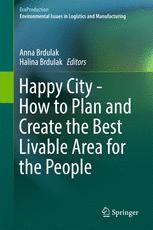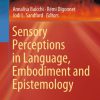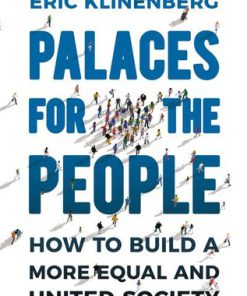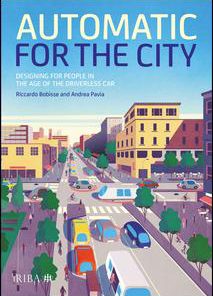Happy City How to Plan and Create the Best Livable Area for the People 1st Edition by Anna Brdulak 3319498997 9783319498997
$50.00 Original price was: $50.00.$25.00Current price is: $25.00.
Happy City How to Plan and Create the Best Livable Area for the People 1st Edition by Anna Brdulak – Ebook PDF Instant Download/DeliveryISBN: 3319498997, 9783319498997
Full download Happy City How to Plan and Create the Best Livable Area for the People 1st Edition after payment.

Product details:
ISBN-10 : 3319498997
ISBN-13 : 9783319498997
Author: Anna Brdulak
This book presents multi-sector practical cases based on the author’s own research. It also includes the best practice, which could serve as a benchmark for the creation of smart cities. The global urbanisation index, i.e., the ratio of city dwellers to the total population, has been steadily increasing in recent years. It is highest in the Americas, followed by Europe, Asia and Africa. The city of the future will combine the intelligent use of IT systems with the potential of institutions, companies and committed, creative inhabitants. The administrative boundaries of today’s cities put certain constraints on their further growth, but in the future these boundaries will no longer be as relevant. Cities in Europe face the challenge of reconciling sustainable urban development and competitiveness – a challenge that will likely influence issues of urban quality such as the economy, culture, social and environmental conditions, changing a given city’s profile as well as urban quality in terms of its composition and characteristics.
Happy City How to Plan and Create the Best Livable Area for the People 1st Table of contents:
1 Sustainable Mobility in Smart Metropolis
Abstract
1 Introduction
2 Smart Mobility in the Smart City
2.1 Directions of Urban Development
2.2 Smart City and Smart Mobility
3 The Planning Process of Sustainable Urban Mobility (SUMP)
4 Application of ITS in Sustainable Mobility
4.1 Elements of Smart Mobility in the Metropolitan Areas in Poland
4.2 SUMP in Upper Silesia Agglomeration
4.3 ITS in Sustaining Mobility in the Upper Silesia Agglomeration
5 Conclusion
References
2 Fair Access to City Space—Establishing Principles
Abstract
1 Introduction
2 Some Thoughts About the Nature of Cities
3 Public and Private Space—Problem of City Life Democratization
4 Framework for Public Space Selection Criteria
4.1 Literature on General Criteria
4.2 Criteria in the Opinion of Residents of Big Polish Cities—Research Results
5 Fair Access to the City Space
5.1 Literature on General Criteria
5.2 Criteria in the Opinion of Residents of Big Polish Cities—Research Results
6 Discussions
7 Conclusions and Reflections
References
3 Enterprise Architecture-Based Model of Management for Smart Cities
Abstract
1 Introduction
2 Attempt to Define a Smart City
3 Systems and Network Perception of a City
4 Enterprise Architecture Concept
5 Architectural Aspect of the Construction of a Smart City
6 Conclusion and Further Works
References
4 The Impact of Novel, Innovative Architectural Information Systems Using Balloon Technology on Publ
Abstract
1 Introduction
2 The Need for Better Urban Air Quality
3 Air Pollution: How Big Is the Problem for Polish Cities?
4 The Impact of Traveller Awareness on Transport
5 The Balloon as a Visual Medium for Better Understanding
6 The Balonodrom for Cities—A Landmark to Improve the Air
7 Conclusion: Balonodrom Project Can Help the City of Wroclaw (and Other Cities, Too) to Improve the
References
Building Social Capital—Citizen Focus
5 Satisfaction Benchmark for Smart Cities
Abstract
1 Introduction
2 Smart Measures for Smart Cities
2.1 Fact-Based Performance Management with ICT Enabled Analytics
2.2 Performance Management in the Public Sector—Managing Complexity Through Intelligent Measures
2.3 Managing and Benchmarking Smart Cities’ Performance
2.4 Smart Comparison for Smart Cities—Managing Performance in Complex Environments
3 Management and Quality Systems
3.1 Quality and Its Dimensions in Public Organisations
3.2 Quality Assessment and Quality Management
3.3 Quality Management in a Smart City
4 Methodological Procedure for Satisfaction Benchmarking
4.1 Purpose/Use of the Inhabitant Satisfaction Survey
4.2 The Basics of Public Surveys
4.3 Project Phases of an Inhabitant Satisfaction Analysis
4.3.1 Survey Procedure (1)
4.3.2 Compiling a Questionnaire (1)
4.3.3 Carrying Out the Survey (2)
4.3.4 Statistical Analysis: The Delta (2)
4.3.5 Workshop/Courses of Action (3)
4.4 Discussion on “The Delta” and on Satisfaction
5 Empirical Evidence as a Base for Benchmarking
5.1 The Aggregate Data
5.2 Between Analysis: Case Study on Process Benchmarking
5.3 Within Analysis: Target-Specific Measures for Stakeholders
6 Criticism of the Methodology
7 Conclusion
References
6 Role of Public Government Units Within the Framework of the Smart City Concept
Abstract
1 Introduction
2 Sustainable Development of the Cities in Europe
3 The Notion of the Quality of Life
4 The Role of Local Governments in Creating a Smart City
5 Conclusions and Areas for Further Research
References
7 Quality of Life and Gender Equality: Some Conclusions from a Public Opinion Poll in Poland
Abstract
1 Introduction
2 Quality of Life—Definition and Literature Review
3 Gender equality de jure and de facto in Poland
3.1 Equality de jure
3.2 Equality de facto
3.3 Gender Indexes for Poland
4 How Does Gender Equality Influence Quality of Life?
5 Conclusions
References
8 The Analysis of Quality of Life—The Case of Warsaw
Abstract
1 Introduction
2 Quality of Life in the Literature
3 Ranking the Cities
4 Quality of Life in the Context of Warsaw
5 Summary
References
9 Aiming to a Future University—The Case of the SGH Campus Redevelopment
Abstract
1 Introduction
2 Quality of Habitants’ Life and the Education Process
3 The University Education and Its Influence on Quality of Inhabitants’ Lives
4 The Case of Warsaw School of Economics
4.1 Circumstances of Change
4.2 A Brief Description of the SGH and Its Historical Campus
4.3 Goals Should Be Achieved by Rebuilding of the SGH Campus
4.4 Dilemmas of the Campus Redevelopment
4.5 Public Discussion
5 Conclusion
References
Integrated Infrastructures and Processes Across Energy, ICT and Transport
10 Integrated Infrastructures and Processes Across Energy, ICT and Transport
Abstract
1 Introduction
2 Focus on Digital Platform
3 Supercomputing Data Driven City
4 Internet of Things
5 Cybersecurity
6 The impact and outcome
References
11 Lessons from a Large Scale Demonstrator of the Smart and Sustainable City
Abstract
1 Introduction
2 City Challenges
3 Smart City Concept
4 Presentation of SunRise Smart City Project
4.1 Objectives—Originality
4.2 Presentation of the Scientific Campus, Support of SunRise Demonstrator
4.2.1 Drinking Water Network
4.2.2 District Heating
4.2.3 Electrical Grid
5 Conclusions
References
12 Mobility Oriented Development (MOD): Public-Private Partnership in Urban Parking and Traffic Mana
Abstract
1 Introduction
2 Urban Mobility in History
3 Nowadays MaaS
4 Managing Mobility Behaviours
5 Conclusions
Acknowledgements
References
13 Eco-Innovations in Sustainable Waste Management Strategies for Smart Cities
Abstract
1 Introduction
2 Eco-Innovations
3 Waste Management Sector
4 Decision Makers
4.1 End-of-Waste Criteria
4.2 Life Cycle Assessment
5 Waste Management Strategies for Smart Cities
5.1 Smart Collection
5.2 Smart Processing and Smart Energy Recovery
5.2.1 Mechanical Biological Treatment (MBT) and Mechanical Biological Stabilization (MBS)
5.2.2 Composting
5.2.3 Anaerobic Digestion
5.2.4 Incineration
5.3 Smart Disposal
6 Conclusions
Acknowledgements
References
Policy and Regulations
14 Smart City Landscape Protection—EU Law Perspective
Abstract
1 Introduction
2 The Rise of European Smart Cities
3 Common Goals of Urban Landscape Protection Within the EU Law
4 European Landscape Convention and Aarhus Convention with Regard to Public Participation in Smart C
5 Conclusions
References
15 The Legal Aspects of Intelligent Cities
Abstract
1 Introduction
2 The International Standards Based on ISO
3 The Intelligent City and the Provisions of Public Procurement Act
4 Big Data and the Protection of Personal Information
5 Slow City
6 Conclusion
References
16 City Debugged. How to Reform Polish Cities so They Thrive Socially and Facilitate Sustainable Gro
Abstract
1 Introduction
2 Depopulation as a Reform Driver of Poland’s Cities
2.1 Major Consequences of Depopulation
2.2 Range of Possible Solutions
3 Limited Self-Governance of the Local Self-Governments
3.1 Reforms Proposal for the Local Governance System
3.2 Transparency, Citizens and the City
3.3 Good Governance Approach to City Management
4 Powers of the Cities to Structure Their Development Trajectory
5 Conclusions
References
17 Exploring Public Attitudes Towards Urban Access Regulation Schemes—Case of Maribor
Abstract
1 Introduction
2 Methodology
2.1 The Research Framework
2.2 Definition of Questionnaire Variables
2.3 Survey and Demography
2.4 Methodology Used to Develop the Model
3 Survey Results
3.1 Exploratory Factor Analysis
3.2 Confirmatory Factor Analysis
3.3 Structural Equation Model
3.4 Fit Indices
3.5 Descriptive Statistics
3.6 Explanation of SEM Results
4 Conclusion
People also search for Happy City How to Plan and Create the Best Livable Area for the People 1st:
how to plan a city
happy city how to play
happy city game how to play
how to play happy city board game
happy city gameplay
Tags: Happy City, Plan, the Best, the People, Anna Brdulak
You may also like…
Business & Economics - Human Resources
Business & Economics - Management & Leadership
Politics & Philosophy - Sociology
Palaces for the People How To Build a More Equal and United Society Eric Klinenberg
Business & Economics - Small Business
The Power Within You Learn to Create a Happy Healthy Profitable Life Chris Carley
Housekeeping & Leisure - Interior Design & Decoration
Business & Economics
Leading with Dignity How to Create a Culture That Brings Out the Best in People Donna Hicks
Comics & Graphic Novels - Cartooning
Psychology
Friends and Lovers How to Create the Relationships You Want Marc 0931432227 9780931432224












